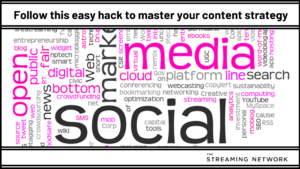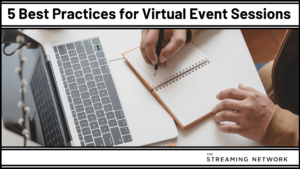We have all have encountered the following roadblocks that come with hosting live events from technical audio/video malfunctions to speakers cancelling at the last minute, and worst of all wi-fi interference.
But, what if there was a better way to conduct live events without any issue?
Enter simulated live webinars or simulive for short. This allows for companies to pre-record a webinar prior to the live event. This way, you can choose a time that works with all your speakers and ensure their attendance to your event. This also allows for the ability to solve any technical issues that come up weeks before.
Your viewers will think they are attending the actual live event (unless told otherwise). This is accomplished by having a speaker open the webinar with an introduction or close the webinar with a live Q&A.
In the past, we’ve discussed various webinar presentation types. Namely, live events vs. simulated live vs. on-demand webinars.
Which now begs the question, what’s the best webinar format? Keep reading as we go through the use cases and benefits of each presentation type.
1. Live Webinar Events
This is by far the most popular webinar format. Set up a date for attendees to view your content during a specific window of time.
The main benefit to this method is engaging with your viewers in real time. You can answer questions throughout the webinar. Additionally, you can change the direction of the topic depending on what feedback you receive. With that being said, live events usually come with their own hiccups, as mentioned above.
Generally, you would use this format for educational purposes like tutorials or demos.
2. On-Demand Webinars
Previously, I’ve discussed what on-demand webinars are and how to optimize them. As a refresher, on-demand content is a recorded webinar that’s available after the live event.
A common misconception is that your webinar engagement will go down with this format. Depending on your webinar console, you can include a resources hub for viewers. Additionally, you can leverage polls and surveys that you can follow-up with at a later time. This is a feature offered within the Elite Webinar Platform.
One of the major benefits of hosting on-demand content is reaching new audiences. These are the people that couldn’t attend the live event for whatever reason.
Already leveraging on-demand webinars? Watch our video to learn the best practices to promote your content.
3. Simulated Live Webinars
Simulated live webinars work best with evergreen content. This is content that won’t change over time and is not affected by trends.
Create one recorded event where you can repurpose that content. As opposed to pooling resources to conduct the same live webinar over and over again.
One benefit to simulated live webinars is solving technical issues in advance. During live events, you will often come across audiovisual issues. Sometimes speakers make mistakes while on air. Edit these mistakes out with a recorded webinar.
Pro tip: Don’t make the recorded webinar seem too perfect. A live event that looks edited or too flawless will raise skepticism from your audience. Avoid this if you want webinar attendees to come to you as an authoritative figure within your niche.Another major benefit to using simulated live webinars is that as the speaker, you don’t have to be on air for the entire time. Speakers can do an introduction in real time and transition into the pre-recording. Or, your speakers can enter near the end of the live webinar to answer any questions asked during the event. This webinar format removes the stress associated with live events.
Earlier I mentioned repurposing the content with simulated events. Use the same pre-recorded content for various audiences. This works best if they are in different time zones. Save your events team from the time taken to schedule many webinar events. Or coordinating one time that fits as many time zones as possible.
The key emphasis on leveraging this webinar format is for evergreen content. The simulated live webinar will not work with a webinar program that is always changing. You cannot use the same webinar to cover different events or ideas.
Let’s Recap
Three of the most well-known webinar formats are:
- Live webinars.
- On-demand webinars.
- Simulated live webinars.
So, what’s the best webinar format for you? It ultimately comes down to what your end goal is.
Live webinars offer a sense of urgency. Giving viewers one window of opportunity to consume your content and engage with you. Also, you will receive feedback from attendees in real time.
On-demand webinars are great in reaching new audiences. This is by finding viewers who would not have been able to attend your event. It’s a great way to increase your viewership while still being able to engage with your attendees.
Simulated live webinars remove the stress of hosting live events. Avoid scheduling mishaps with speakers and technical difficulties with a pre-recorded event. This webinar format is best for repurposing evergreen content that is not affected by current trends.
Learn how to create on-demand and simulated live content with The Streaming Network’s support team. Elevate your webinar marketing strategy today.






